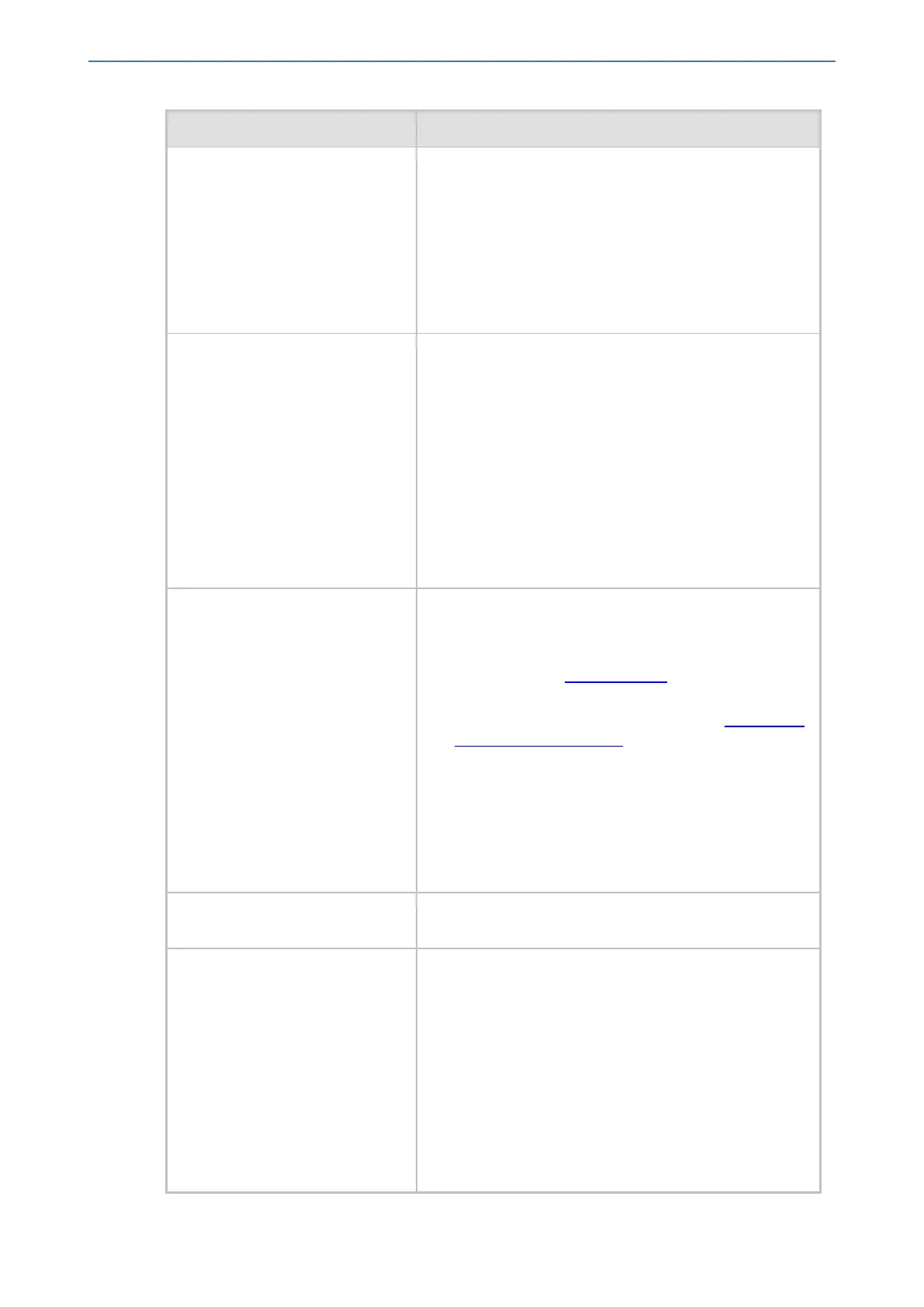CHAPTER68 Configuration Parameters Reference
Mediant 1000 Gateway & E-SBC | User's Manual
Parameter Description
[TDMHairPinning] Defines static TDM hair-pinning (cross-connection)
performed at initialization. The connection is between
trunks with an option to exclude a single B-channel in
each trunk. Format example: T0-T1/B3,T2-T3,T4-T5/B2.
Note:
■ For the parameter to take effect, a device reset is
required.
■ The parameter is applicable only to PRI.
[TDMHairPinningAlarmIndication] Enables two trunks that are connected through TDM
hairpinning to signal the Far-End about the presence of
PSTN alarms. When the trunk with TDM hairpinning
receives a PSTN alarm, its' connected trunk sends an
AIS alarm to its' Far-End.
■ [0] = (Default) Disable
■ [1] = Enable
Note:
■ For the parameter to take effect, a device reset is
required.
■ The parameter is applicable only to PRI.
'Enable TDM Tunneling'
tdm-tunneling
[EnableTDMoverIP]
Enables TDM tunneling for all calls.
■ [0] Disable (default)
■ [1] Enable = Enables TDM tunneling. For more
information, see TDM Tunneling.
■ [2] Private Wire = Enables TDM tunneling for private
wire services. For more information, see Configuring
Private Wire Interworking.
Note:
■ For the parameter to take effect, a device reset is
required.
■ The parameter is applicable only to ISDN PRI.
■ To enable the parameter per trunk, see the
EnableTDMOverIPforTrunk parameter.
[EnableTDMOverIPforTrunk] Enables TDM tunneling for a specific trunk. For a
description of the parameter, see EnableTDMoverIP.
iso8859-charset
[ISO8859CharacterSet]
Defines the ISO 8859 character set type (languages) for
representing the alphanumeric string of the calling name
(caller ID) in the forwarded message, for IP-to-Tel and
Tel-to-IP calls.
■ [0] = No Accented - proprietary method where
incoming INVITE messages with any accented
characters (e.g., á, é, í, ó, and ü), which are
represented in a 2-byte unicode character, are
translated to Latin-only, which are normal one-byte
ASCII characters (a, e, i, o, and u, respectively).
■ [1] = Western European (Default)
- 1269 -

